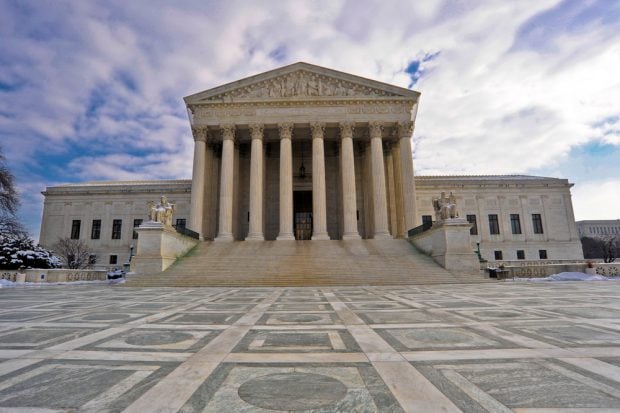 The CFPB has been widely criticized for regulating byenforcement actions, rather than embarking on rulemakingproceedings, to delineate the regulatory rules of the road for thefinancial services industry. In a March 9,2016 speech, DirectorRichard Cordray endeavored to explain the method to the CFPB'senforcement madness. While understanding the director's perspectiveis helpful, that speech failed to connect all the dots for thecompliance world.
The CFPB has been widely criticized for regulating byenforcement actions, rather than embarking on rulemakingproceedings, to delineate the regulatory rules of the road for thefinancial services industry. In a March 9,2016 speech, DirectorRichard Cordray endeavored to explain the method to the CFPB'senforcement madness. While understanding the director's perspectiveis helpful, that speech failed to connect all the dots for thecompliance world.
So, what did Director Cordray say? The bureau's supervisory workis largely confidential between the company being examined and theCFPB. However, the CFPB publishes a quarterly report called“Supervisory Highlights” to bring transparency to the CFPB'soversight program. The CFPB expects the industry to take note ofthe major issues addressed in its examination work and toimmediately respond to the remedial actions noted in those reports.As to enforcement actions, Director Cordray said, “It would becompliance malpractice for executives not to take careful bearingsfrom the contents of these orders about how to comply with the lawand treat consumers fairly.” He also suggested that the CFPBconsent orders are meant to expose a pattern of actions for theindustry to decipher.
|Let's try applying these statements to the No. 1 consumercomplaint category for the CFPB: Debt collection. In 2015, the CFPBhad 15 consent orders related to debt collection practices. Fromthose orders, it's easy to identify what the CFPB doesn't like, butit's not readily apparent what the right way to handle debtcollection is – at least in the CFPB's eyes.
|Pulling out the Dec. 16, 2015 consent order for EZCORP,in-person debt collection tactics were criticized, includingwearing company name tags and stating the company name when goingto borrowers' homes or places of work. The CFPB even issued abulletin titled “In-person Collection of Consumer Debt” along withthe EZCORP consent order, where it stressed the heightened riskassociated with committing unfair acts or practices when conductingin-person debt collection efforts. Yet, in neither the EZCORPconsent order nor the bulletin can the industry find how to handlethose activities in a compliant manner. The industry was warned,yet given zero guidance.
|For the financial services industry to connect the dots, we needto look more broadly. For example, when companies sell add-onproducts, a good place to start is the CFPB's Examination Manualfor Credit Cards, Module 6: Marketing, Sale and Servicing of CreditCard Add-on Products. No, it doesn't matter if you aren't workingfor a credit card company. That portion of the manual lays outseven practices that the CFPB has found to be deceptive. The fifthdeceptive practice listed is representing that the products wouldimprove the consumer's credit score. It would take considerableeffort to find where that practice was found deceptive in a consentorder since the CFPB has issued more than 100 consent orders, butthe bureau made it easier to find by adding it to the 1000-pluspage manual.
|Sometimes, the industry needs to look beyond the CFPB's actions.Redlining refers to the practice of denying services to consumersbased on race or ethnicity. As an example, last fall the CFPB foundthat a New Jersey bank was engaged in redlining in the followingways:
- The bank avoided locating branches and loan officers inmajority Hispanic and/or African-American communities.
- The bank avoided using mortgage brokers in thesecommunities.
- The bank even excluded majority Hispanic and/orAfrican-American communities from its marketing strategy and creditassessment.
For compliance-focused executives, it might be easy to checkthis one off and say this is a mortgage-related issue and not ourconcern. Yet, by following Department of Justice press releases,you would discover that reverse redlining was a legal theoryapplied to “buy here, pay here” auto dealers. Two auto dealers werefound to be intentionally targeting African-American customers forthe extension and servicing of credit on unfair and predatory termssuch as:
- Locating dealerships in areas where residents were majorityAfrican-American; and
- Offering sale prices, down payments and interest ratesdisproportionately higher than other subprime used cardealers.
These practices resulted in default and repossession rateshigher than other subprime used car dealers. To develop acomprehensive picture of the compliance landscape, enforcementactions by the DOJ, Federal Deposit Insurance Corporation, Officeof the Comptroller of the Currency and even Federal TradeCommission have to be monitored to put the CFPB's actions intoperspective. Here, it's clear that redlining and reverse redliningare ECOA compliance considerations for any brick and mortarlender.
|So yes, it was helpful for Director Cordray to explain themethod to the CFPB's enforcement approach and for him to encouragethe industry to connect the dots to receive his compliancemessages. But keep your eye on a broader set of data points thanjust Supervisory Highlights and enforcement orders! Know thelanguage of the CFPB and keep your credit union poised forfinancial growth and stability.
|John Short is chief compliance officer for Fortegra. He canbe reached at 904-421-5977 or [email protected].
Complete your profile to continue reading and get FREE access to CUTimes.com, part of your ALM digital membership.
Your access to unlimited CUTimes.com content isn’t changing.
Once you are an ALM digital member, you’ll receive:
- Critical CUTimes.com information including comprehensive product and service provider listings via the Marketplace Directory, CU Careers, resources from industry leaders, webcasts, and breaking news, analysis and more with our informative Newsletters.
- Exclusive discounts on ALM and CU Times events.
- Access to other award-winning ALM websites including Law.com and GlobeSt.com.
Already have an account? Sign In
© 2024 ALM Global, LLC, All Rights Reserved. Request academic re-use from www.copyright.com. All other uses, submit a request to [email protected]. For more information visit Asset & Logo Licensing.









